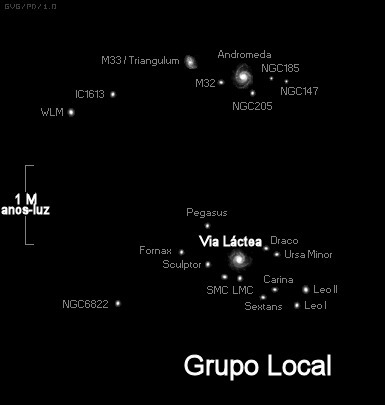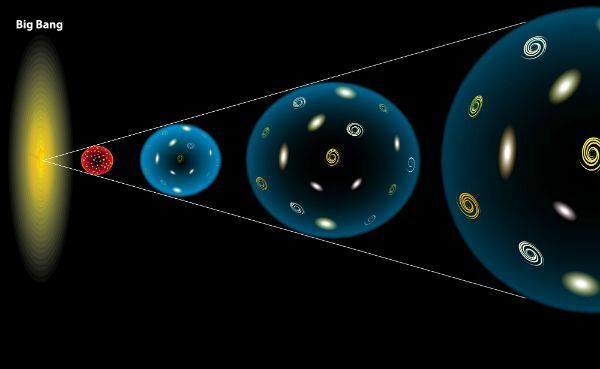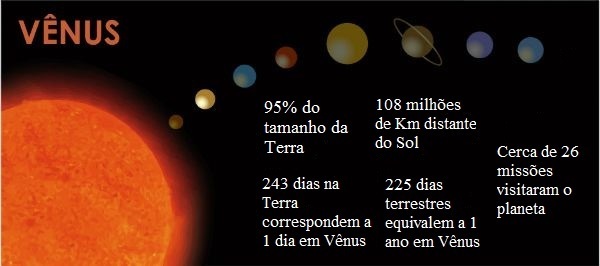O Uranus planet is the third largest of the Solar system and is positioned on the seventh orbit from the Sun. Made up mainly of gases and fluids, Uranus does not have a solid surface like the Earth. Its structure is also composed of ring systems that orbit around it, which are less bright than those of other planets such as Saturn. Altogether, Uranus has 27 known moons. Only one space probe has visited the planet, and most discoveries about it have been made with the aid of telescopes.
Read too: 8 fun facts about the Solar System
Uranus General Data
- Diameter: 50,724 km
- Surface area: 8,083,079,690 km²
- Pasta: 8,681 x 1025 kg
- Density: 1.27 g/cm³
- Gravity: 8.87 m/s²
- Distance from the Sun: 2,870,658,186 km
- Natural satellite: 27 known moons
- Rotation period: 17 hours and 14 minutes
- Translation period: 84 earth years
- Average temperature: -197°C
- Atmospheric composition: hydrogen, helium and methane

Uranus Characteristics
Uranus is the seventh planet from the Sun and the third largest
of the Solar System, after Jupiter and Saturn. Its mass is approximately 14 times that of Earth, and it is four times its size. Like Neptune, is nicknamed Ice Giant as a function of the average surface temperature of -197 ºC (due to its distance from the Sun) and its composition.The planet's atmosphere is formed by hydrogen, helium and methane, this being the element responsible for the bluish-green color observed in images obtained from telescopes. meet also very small amounts of water and ammonia in its atmospheric composition, where, in the lower layers (troposphere), there is cloud formation. Atmospheric winds on Uranus reach speeds of up to 900 km/h.
Uranus is a planet that does not have a solid surface how is the earth's crust. The gaseous atmosphere is followed by liquids arranged in layers, with the exception of the rocky-looking core.
One of the most curious aspects of Uranus is its magnetosphere. The magnetic axis of this planet has a large inclination of about 60 degrees with respect to its axis of rotation. Also, he is displaced from the center.
Another unique feature of Uranus is the 97.7° inclination of its equator. Seasons are therefore described as the most extreme in the Solar System. At the solstices, while one hemisphere receives light for the entire period, the other plunges into complete darkness for about 21 Earth years.
Do not stop now... There's more after the advertising ;)
See too: What are exoplanets?
the moons of uranus
Uranus has a total of 27 known moons. Although there is no knowledge about the composition of all of them, it is known that those closest to the planet are predominantly formed by rock and ice. Five satellites stand out: Titania, Oberon, Umbriel, Miranda and Ariel.
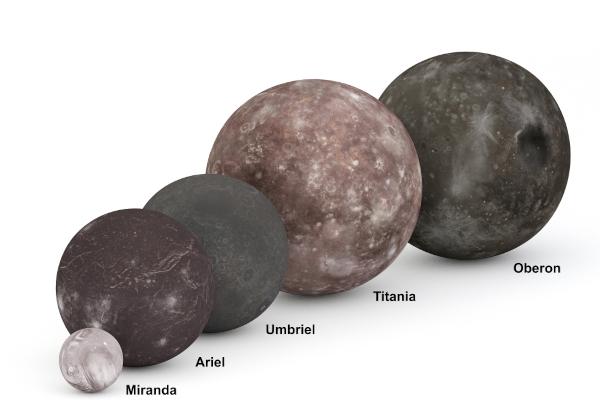
Titania and Oberon are the largest moons of Uranus. It has a diameter of 1520 km and orbits 584,000 km from the planet. It is Uranus' satellite with the greatest number of craters on its surface. Titania, in turn, has a diameter of 1578 km. Have in your training Water and carbon dioxide frozen. Its orbit is about 788,000 km from the planet, the farthest among the satellites highlighted here.
Ariel and Miranda are the two closest moons to Uranus. The first orbits 190,000 km from the planet, while the second is 130,000 km away. Miranda is the smallest of them, and has an extremely rugged surface, marked by the presence of craters and mountains. It is believed to be mostly ice, just like Umbriel.
Uranus Rings
Uranus has a set of rings formed by 13 systems. Its color varies from gray to reddish, considering the most internal to the most external system. Only one of them, named Epsilon, is blue in color. These are considerably narrow rings that do not are as visible as those on other planets, like Saturn.
The rings of Uranus were so named, from the closest to the farthest on the planet: Zeta, 6, 5, 4, Alpha, Beta, Eta, Gamma, Delta, Lambda, Epsilon, Nu and Mu.

Uranus exploration
The discovery of Uranus is officially attributed to astronomer William Herschel, who identified the planet with a telescope, on March 13, 1781. As is visible to the naked eye, others before him had observed the star in the heavens, though without making exactly the distinction.
Uranus' first moons were discovered six years later, while Miranda was only discovered in the mid-20th century. As early as the 1970s, on March 10, 1977, Australian researchers first observed the ring systems surrounding the Ice Giant. That same year, the US Space Agency (NASA) has launched two space probes, Voyager 1 and Voyager 2, which is responsible for the only visit to Uranus.
Among the discoveries of Voyager2, which arrived on the planet on January 24, 1986, are its strong points. magnetic field, 10 new moons and two ring systems.
In the following years, the main observations and discoveries were carried out by telescopes. In 2005, with the help of the Hubble telescope, two small moons and new rings were identified. As early as 2006, North American and Australian researchers discovered the coloration of the outermost rings.
In 2006, NASA launched the New Horizons space probe, with the objective of exploring the Kuiper Belt region, one of the most distant in the Solar System and where it is located Pluto. In 2011, the probe made its passage through Uranus' orbit, although the planet was not at its crossing point, as described by NASA. Thus, Voyager 2 remains the only probe to get closer to the planet, bringing valuable discoveries about you.
Also access: 4 facts that prove man's arrival on the moon
Curiosities about Uranus
Its name was given, in 1782, by the astronomer Johann Elert Bode. Uranus, in Greek mythology, is the god of the heavens.
Since its official discovery, the planet has only completed two laps around the Sun. The third will be in 2033.
He was the first whose discovery was made by a telescope.
Rotates sideways due to the tilt of its axis. This movement is from east to west.
The inspiration for the names of their moons came from literature, more specifically from characters created by William Shakespeare and Alexander Pope.
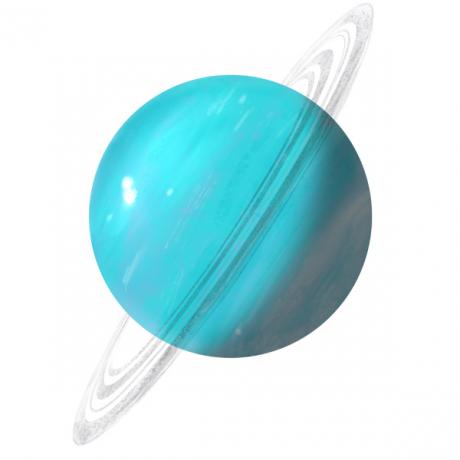
solved exercises
Question 1 - Uranus, also known as the Ice Giant, is one of the largest planets in the Solar System. Most recent discoveries about the planet have been made with the aid of telescopes, whose images always tell us the bluish-green color of its surface. Point out which of the elements is responsible for this characteristic:
A) water and ice
B) helium
C) methane
D) hydrogen
E) ammonia
Resolution
Alternative C. Methane gas, present in Uranus' atmosphere, is responsible for the bluish-green color we see in the images.
Question 2 - Regarding the planet Uranus, read the following statements and tick the incorrect one.
A) Its orbit is the seventh from the Sun.
B) It has a rocky surface similar to Earth's.
C) Its axis is tilted almost 98°.
D) It has a small rocky core surrounded by liquid and gaseous materials.
E) It has ring systems in its structure.
Resolution
Alternative B. Unlike Earth, Uranus does not have a solid surface.
By Paloma Guitarrara
Geography teacher

